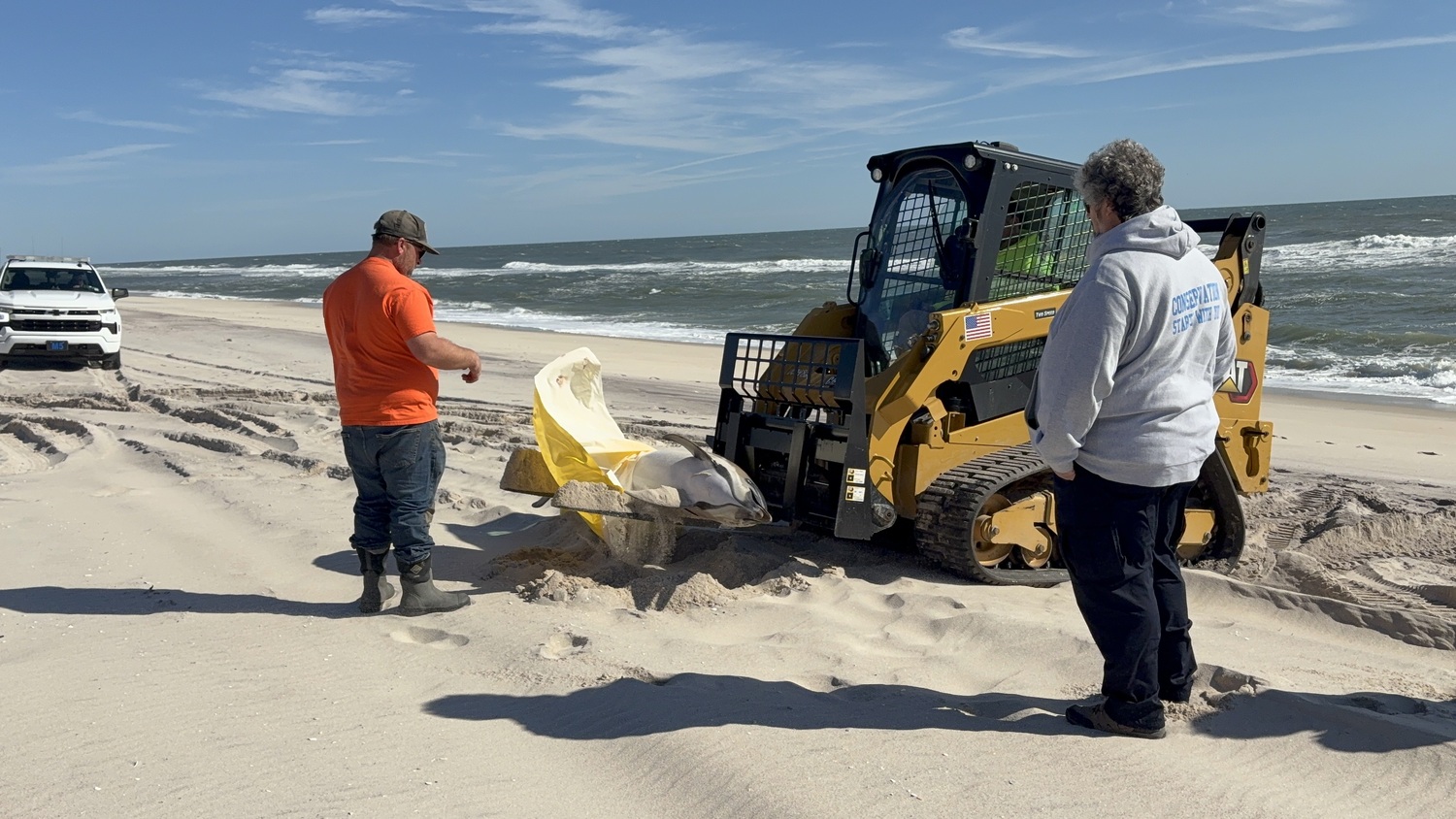Report on the Impact of Government Shutdown on National Parks and Sustainable Development Goals
1.0 Introduction and Executive Summary
A recent United States government shutdown has resulted in the furlough of 9,000 National Park Service employees and the partial or full closure of federally managed sites. This report analyzes the resulting impacts through the lens of the United Nations Sustainable Development Goals (SDGs), focusing on economic stability (SDG 8), environmental protection (SDG 15), community resilience (SDG 11), and institutional integrity (SDG 16).
- The shutdown directly threatens the conservation of natural heritage, undermining progress toward SDG 15 (Life on Land).
- Local economies dependent on tourism face instability, challenging SDG 8 (Decent Work and Economic Growth) and SDG 11 (Sustainable Cities and Communities).
- The absence of federal oversight and services highlights institutional weaknesses, which is a core concern of SDG 16 (Peace, Justice and Strong Institutions).
- State and local partnerships have emerged to mitigate impacts, demonstrating a reactive application of SDG 17 (Partnerships for the Goals).
2.0 Economic and Community Impacts: A Challenge to SDG 8 and SDG 11
The furlough of federal employees and the operational uncertainty of national parks create significant economic repercussions for communities that rely on tourism. This situation directly impedes the objectives of promoting sustained, inclusive, and sustainable economic growth (SDG 8) and making communities resilient and sustainable (SDG 11).
2.1 Disruption to Local Economies and Small Businesses
- Revenue Instability: Local businesses report varied immediate impacts. While some tour operators near Yosemite have seen an increase in visitors due to waived entrance fees, others, such as a vacation cabin business in Harpers Ferry, report a 30% decrease in bookings, partly due to furloughed customers canceling plans.
- Long-Term Economic Risk: Prolonged shutdowns pose a significant threat to sustainable tourism. Past events, such as the 35-day shutdown in 2018-2019, resulted in an estimated $47.4 million revenue loss for Washington, DC, affecting a wide range of businesses from small shops to larger entities.
- Employment and Decent Work: The furlough of 9,000 National Park Service employees represents a direct setback to SDG 8, removing stable employment and income from the workforce.
3.0 Environmental Degradation and Conservation Risks: Undermining SDG 15
The most direct consequence of the shutdown is the compromised ability to protect and conserve national parks, which are critical ecosystems. The lack of staffing and enforcement directly threatens targets within SDG 15 (Life on Land), which aims to protect, restore, and promote the sustainable use of terrestrial ecosystems.
3.1 Threats to Ecosystem Integrity
- Lack of Enforcement: With limited park ranger presence, there are reports of increased illegal activities that harm the environment and wildlife, including the prohibited use of drones and illegal base jumping in Yosemite National Park.
- Waste Management and Pollution: Advocacy groups and park staff have raised concerns over trash piling up in multiple parks. This issue, which occurred in previous shutdowns, poses a direct threat to wildlife and the natural habitat. In response, volunteer groups have organized clean-up efforts, such as those by the YMCA of the Rockies in Colorado.
- Visitor Safety and Guidance: The absence of staff means visitors do not receive fundamental safety guidance, potentially leading to accidents and increased strain on limited emergency response resources, further jeopardizing the sustainable management of these protected areas.
4.0 Institutional Failures and Collaborative Responses: Implications for SDG 16 and SDG 17
The shutdown represents a failure of effective and accountable institutions at the national level, a core tenet of SDG 16 (Peace, Justice and Strong Institutions). In response, alternative governance and partnership models have emerged, reflecting the principles of SDG 17 (Partnerships for the Goals).
4.1 Institutional and Governance Gaps
- Erosion of Public Services: The inability to collect entrance fees, operate visitor centers, and provide full law enforcement and emergency services demonstrates a breakdown in the government’s capacity to manage public assets and ensure public safety.
- Advocacy for Protective Measures: Conservation groups, including the National Parks Conservation Association, are advocating for the complete closure of parks to protect natural resources and ensure visitor safety in the absence of adequate staffing.
4.2 Emergence of Multi-Stakeholder Partnerships
- State-Level Intervention: In West Virginia, state funds are being used to keep New River Gorge National Park and Harpers Ferry National Historical Park fully operational, demonstrating a state-federal partnership to sustain local tourism and protect access to cultural heritage.
- Community and Non-Profit Action: The mobilization of volunteers to clean up parks illustrates a community-level response to fill the service gap left by the federal government, highlighting the importance of civic engagement in achieving sustainability goals.
Analysis of Sustainable Development Goals in the Article
1. Which SDGs are addressed or connected to the issues highlighted in the article?
The article highlights issues that are directly connected to several Sustainable Development Goals (SDGs). The analysis identifies the following relevant SDGs:
- SDG 8: Decent Work and Economic Growth: The article extensively discusses the economic consequences of the government shutdown on tourism, local businesses, and employment. It mentions the financial importance of tourism for local economies and the negative impacts on businesses and workers when this is disrupted.
- SDG 11: Sustainable Cities and Communities: This goal is relevant through its focus on protecting cultural and natural heritage. The article details the risks faced by national parks, which are significant sites of natural heritage, due to the lack of staff and services during the shutdown.
- SDG 15: Life on Land: The article directly addresses the protection of terrestrial ecosystems. It raises concerns about the environmental health of national parks, citing issues like trash accumulation, vandalism, and illegal activities that degrade these natural habitats due to the absence of park rangers.
- SDG 16: Peace, Justice and Strong Institutions: The central theme of the article, a government shutdown, is a failure of effective and accountable institutions. The furloughing of 9,000 National Park Service employees and the resulting inability to provide essential services like law enforcement and safety monitoring demonstrate a breakdown in institutional capacity.
2. What specific targets under those SDGs can be identified based on the article’s content?
Based on the issues discussed, the following specific SDG targets can be identified:
- Target 8.9: “By 2030, devise and implement policies to promote sustainable tourism that creates jobs and promotes local culture and products.” The article connects directly to this target by illustrating how the shutdown disrupts the tourism industry. The governor of West Virginia is quoted saying, “We know that tourism is huge for West Virginia, bringing in billions and billions of dollars every year.” The shutdown’s impact on “small mom-and-pop sandwich shops,” tour companies, and vacation cabin bookings demonstrates a failure to sustain the economic benefits of tourism.
- Target 11.4: “Strengthen efforts to protect and safeguard the world’s cultural and natural heritage.” The article highlights the weakening of protection for national parks like Yosemite and Grand Canyon. The absence of park rangers, closed visitor centers, and lack of fee collection are direct consequences of the shutdown that compromise the safeguarding of these natural heritage sites.
- Target 15.5: “Take urgent and significant action to reduce the degradation of natural habitats…” The article provides clear examples of habitat degradation resulting from the shutdown. It mentions reports of “trash piling up in some national parks” and concerns about “vandalism.” Furthermore, illegal activities such as flying drones and base jumping, which are normally prohibited to protect the environment and wildlife, are occurring due to a lack of enforcement.
- Target 16.6: “Develop effective, accountable and transparent institutions at all levels.” The government shutdown is a prime example of institutional failure. The article states that “9,000 National Park Service employees are furloughed,” leading to a breakdown in essential public services. The concerns about “delays in law enforcement and emergency responses” and the inability to perform “critical functions that protect life, property, and public health” point directly to the ineffectiveness of government institutions during the shutdown.
3. Are there any indicators mentioned or implied in the article that can be used to measure progress towards the identified targets?
Yes, the article mentions or implies several quantitative and qualitative indicators that can be used to measure the impact on the identified targets:
-
Economic Indicators (Target 8.9):
- Government revenue loss: The article cites a specific figure from a past shutdown: “$47.4 million in revenue” lost in Washington, DC.
- Tourism revenue: The importance of tourism is quantified as “billions and billions of dollars every year” for West Virginia.
- Business performance: A vacation cabin owner reported that “bookings are down 30%.”
- Visitor numbers: Private museums saw a significant “uptick in visitors,” with one reporting “50% more visitors” than the previous year, indicating a shift in tourist activity.
-
Institutional and Protection Indicators (Targets 11.4 & 16.6):
- Number of furloughed public employees: The article specifies that “9,000 National Park Service employees are furloughed,” a direct measure of reduced institutional capacity.
- Availability of public services: Indicators include the closure of facilities (“the visitors’ center was closed,” “Smithsonian museums…are closed”) and the absence of personnel (“no park rangers were nearby”).
-
Environmental Indicators (Target 15.5):
- Incidents of environmental violations: The article provides qualitative indicators through reports of illegal activities like “people flying drones” and “base jumping.”
- Waste management issues: There are direct reports of “trash piling up in some national parks,” serving as an indicator of environmental degradation.
4. Table of SDGs, Targets, and Indicators
| SDGs | Targets | Indicators Identified in the Article |
|---|---|---|
| SDG 8: Decent Work and Economic Growth | 8.9: Promote sustainable tourism that creates jobs and promotes local culture and products. |
|
| SDG 11: Sustainable Cities and Communities | 11.4: Strengthen efforts to protect and safeguard the world’s cultural and natural heritage. |
|
| SDG 15: Life on Land | 15.5: Take urgent and significant action to reduce the degradation of natural habitats. |
|
| SDG 16: Peace, Justice and Strong Institutions | 16.6: Develop effective, accountable and transparent institutions at all levels. |
|
Source: cnn.com







